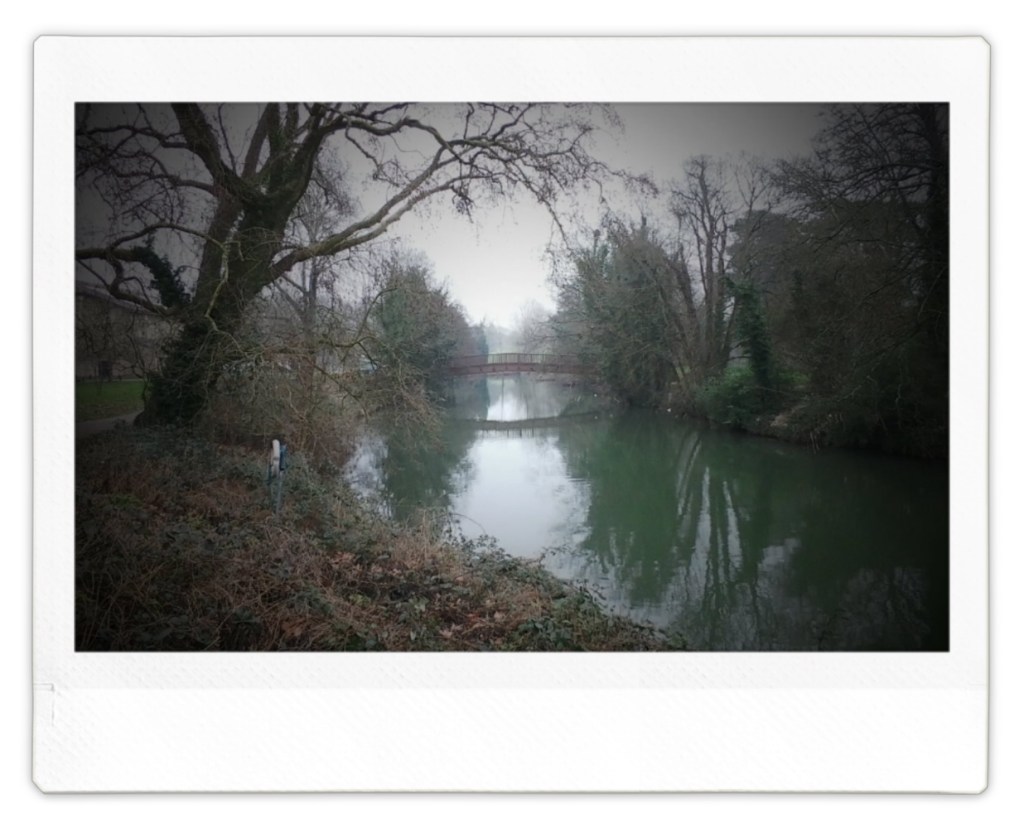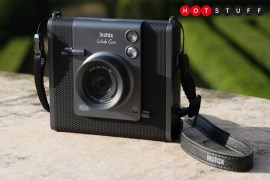Fujifilm Instax Wide Evo review: large format fun has niche appeal
It's got retro charm and fun filters - but the biggest Instax camera isn't also the best
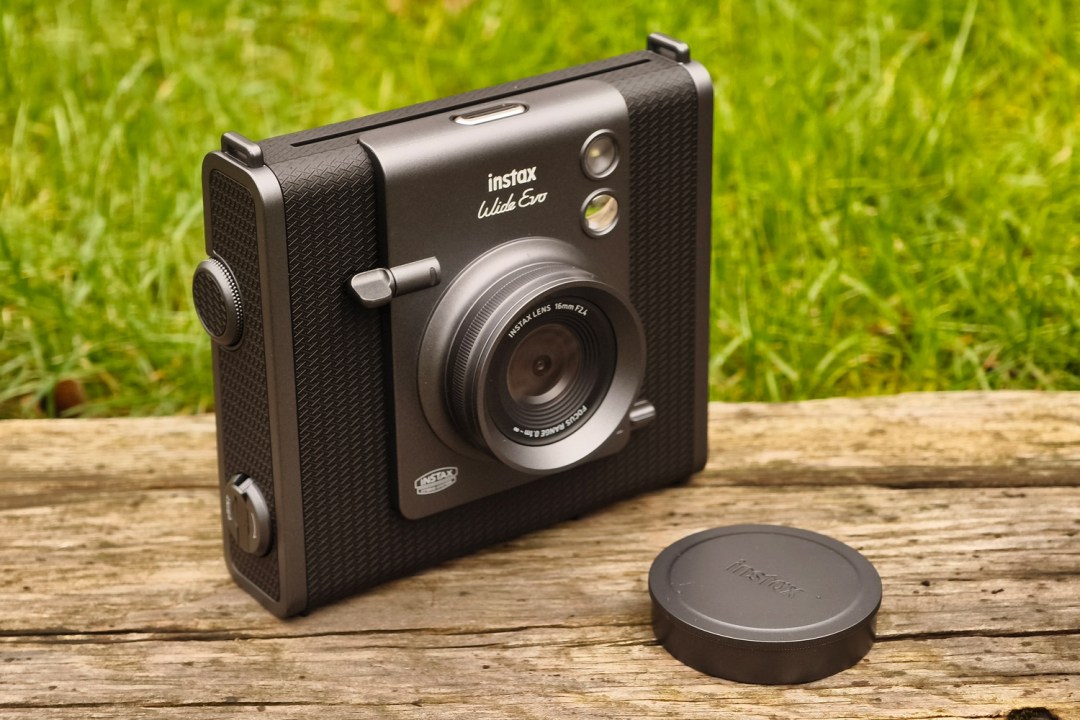
Stuff Verdict
Does-it-all hybrid camera spits out big instant photos and has lots of retro charm, but the Instax Wide Evo isn’t a digital star and might be overkill if you just want to print pics from your phone.
Pros
- Large, detailed Instax photos
- Fun and flexible shooting modes and filters
- Plenty of physical controls
Cons
- Digital quality worse than your phone
- Retro controls put form over function
- Expensive if you aren’t using both camera and printer
Introduction
Instax Wide might be Fujifilm’s physically largest instant film format, but in a popularity contest it’s a niche within a niche behind the more pocket-sized Instax Mini. New compatible instant cameras don’t come around all that often, then – and the firm has made sure this latest one ticks as many boxes as possible.
Essentially a supersized version of the Instax Mini Evo, the Instax Wide Evo fully embraces instant film’s retro charm, but adds a helping of hybrid smarts to please the smartphone generation. This $350/£320 hero can take shots itself, through the widest lens of any Instax to date, or pair to your phone and become an impromptu printer instead. When Instax Wide film costs $19/£17 for two packs of ten prints, being a bit more selective with your snaps can only be a good thing.
This camera’s digital side is very modest, though. When your phone can most likely take a superior shot, does it make sense spending twice as much as an Instax Link Wide printer on one of these?
How we test cameras
Every camera reviewed on Stuff is tested in a range of lighting conditions, with a variety of subjects and scenes. We use our years of experience to compare with rivals and assess ergonomics, features and general usability. Manufacturers have no visibility on reviews before they appear online, and we never accept payment to feature products.
Find out more about how we test and rate products.
Design & build: hip to be square
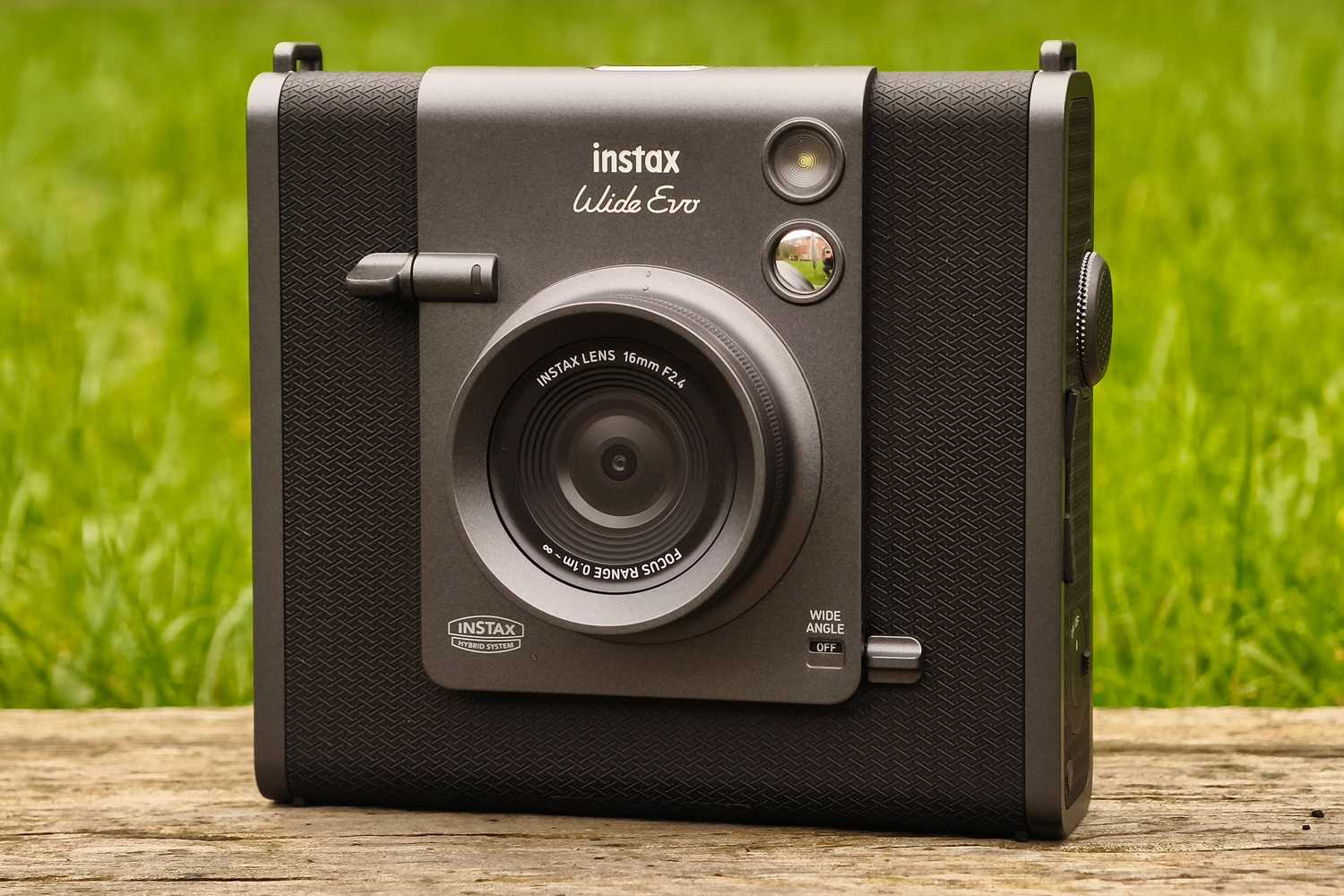
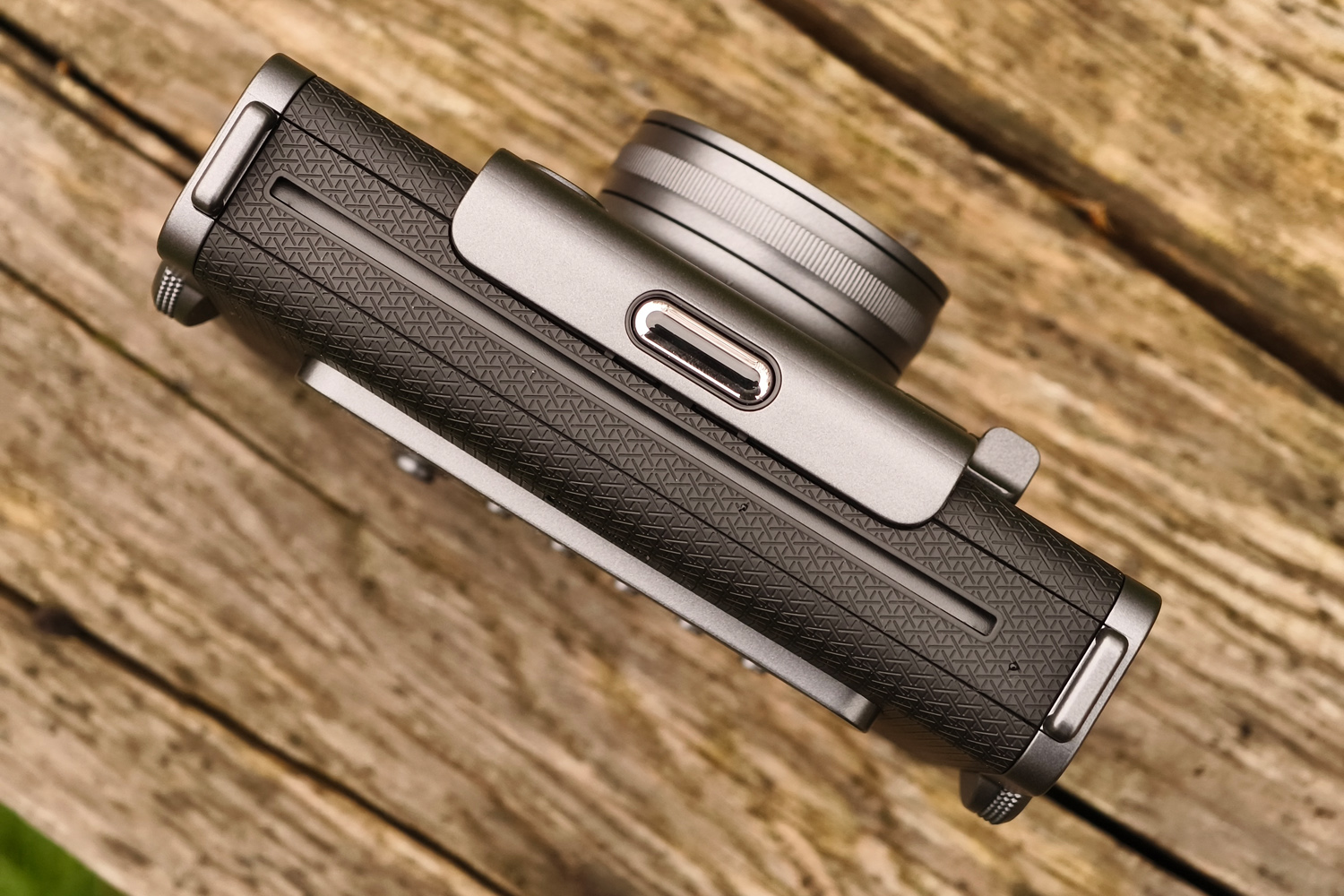
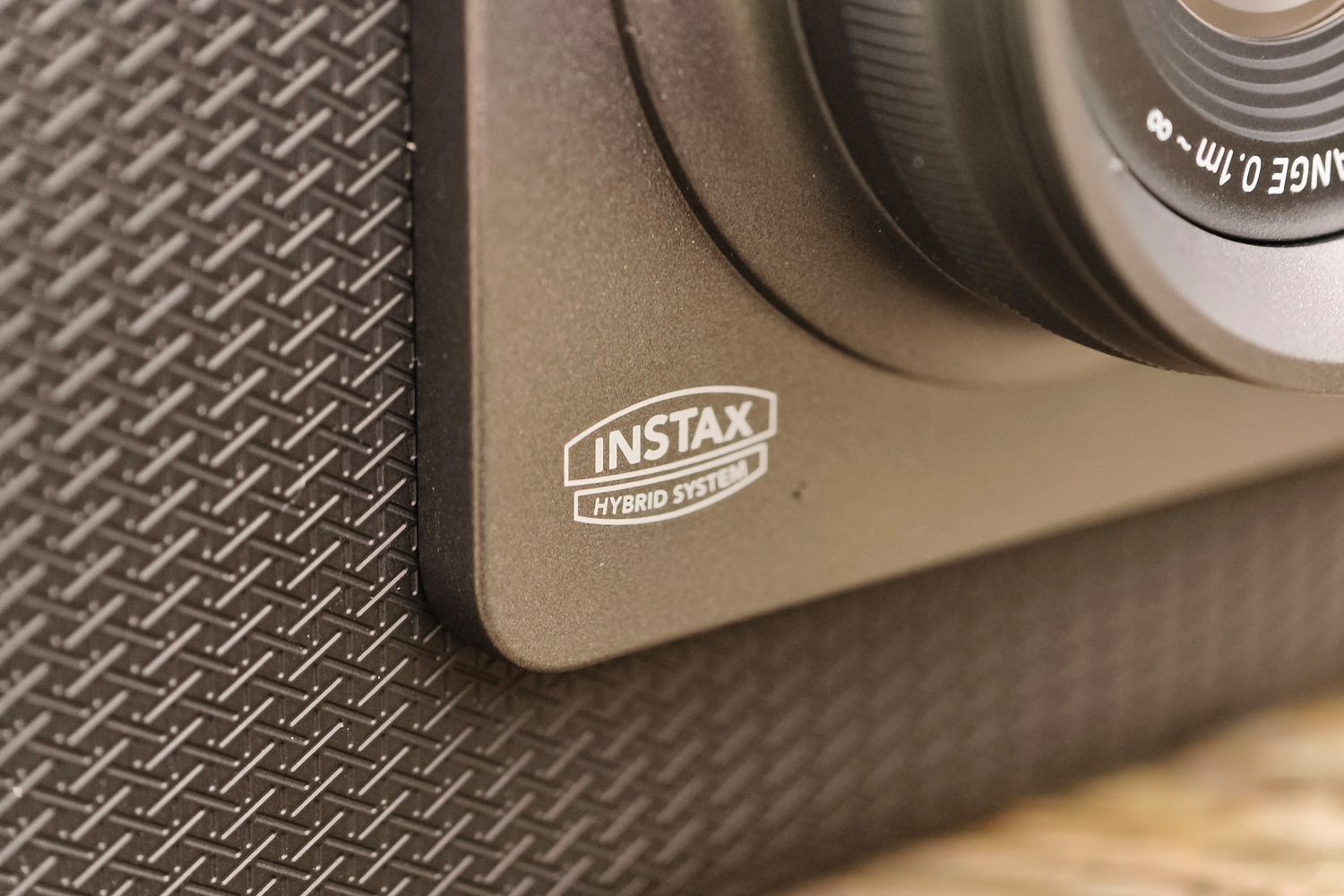
It’s nowhere near as bulky or in-yer-face as the sage green slab that was the Instax Wide 400, but the Instax Wide Evo is still a sizeable shooter. I could frame subjects and shoot one-handed, but it was a lot more comfortable to use two. Better to attach a neck strap to the fixed attachment points near the top edge, where prints are ejected from.
I appreciate Fujifilm embracing the retro look here, with old school logos and labels, a shutter lever instead of a button, and even a manual film winder for printing off pictures. Factor in the rotating dials on either side, the twisting power switch and the lever for adjusting the lens’ field of view, though, and there are a lot of different control methods to get your head around. From the front there’s little to give away the fact this camera is more digital than analogue.
There’s no viewfinder at the rear, just a 3.5in TFT screen and a series of more modern-looking buttons. I almost wish Fuji had added some more retro flair here, as it feels quite disconnected from the rest of the camera. It’s not a touchscreen either, so you’ve got to use the directional stick for navigation.
The chassis is made from plastic, in a similar mix of gunmetal grey and textured black hues to Fuji’s pro-grade GFX digital cameras. It’s heavier than it looks, too, which helps make it feel less toy-like than Fuji’s other Instax models. A tripod thread on the bottom is a sensible addition for a camera so suited to landscape snapping.
Features & battery life: twist ’em out
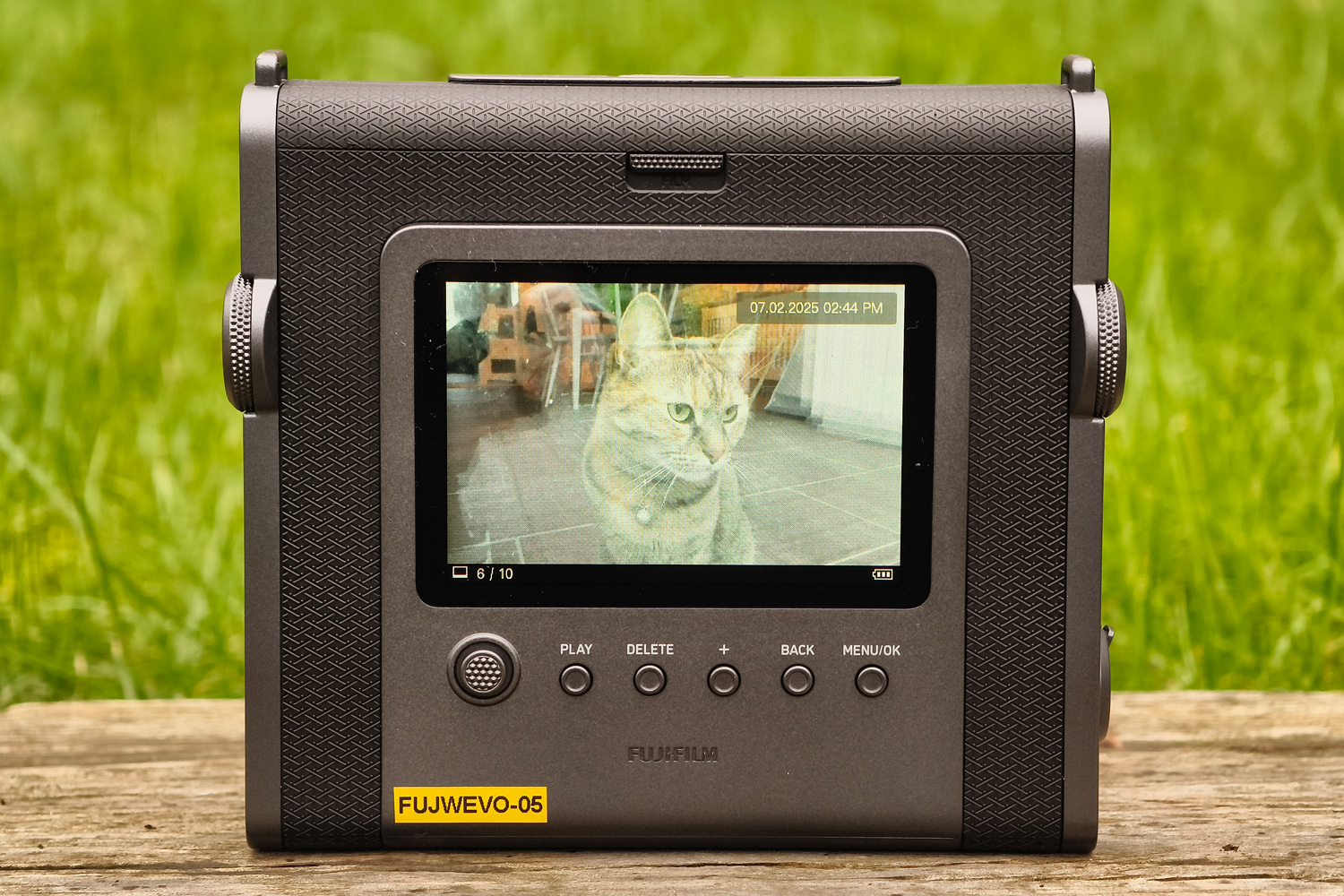
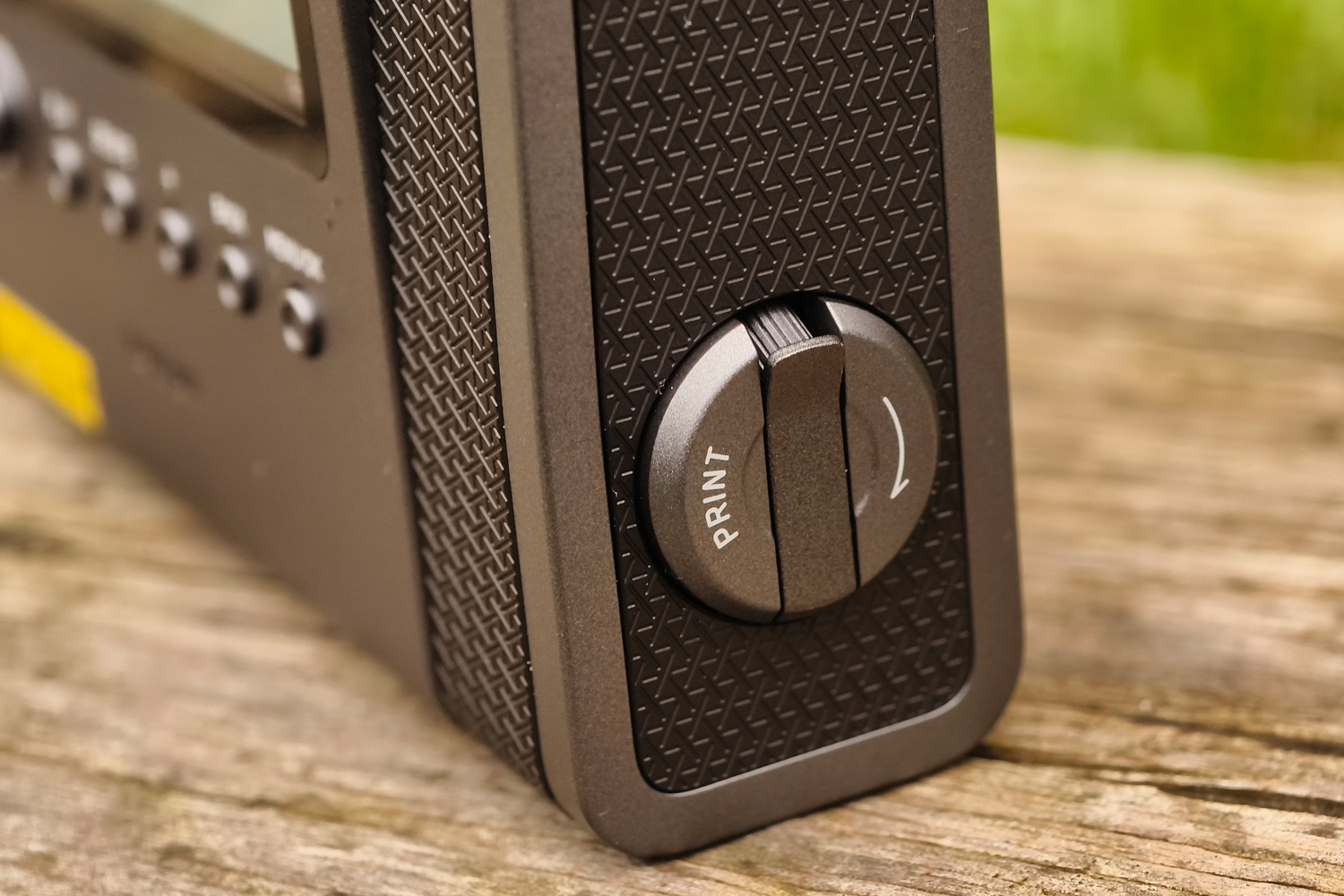
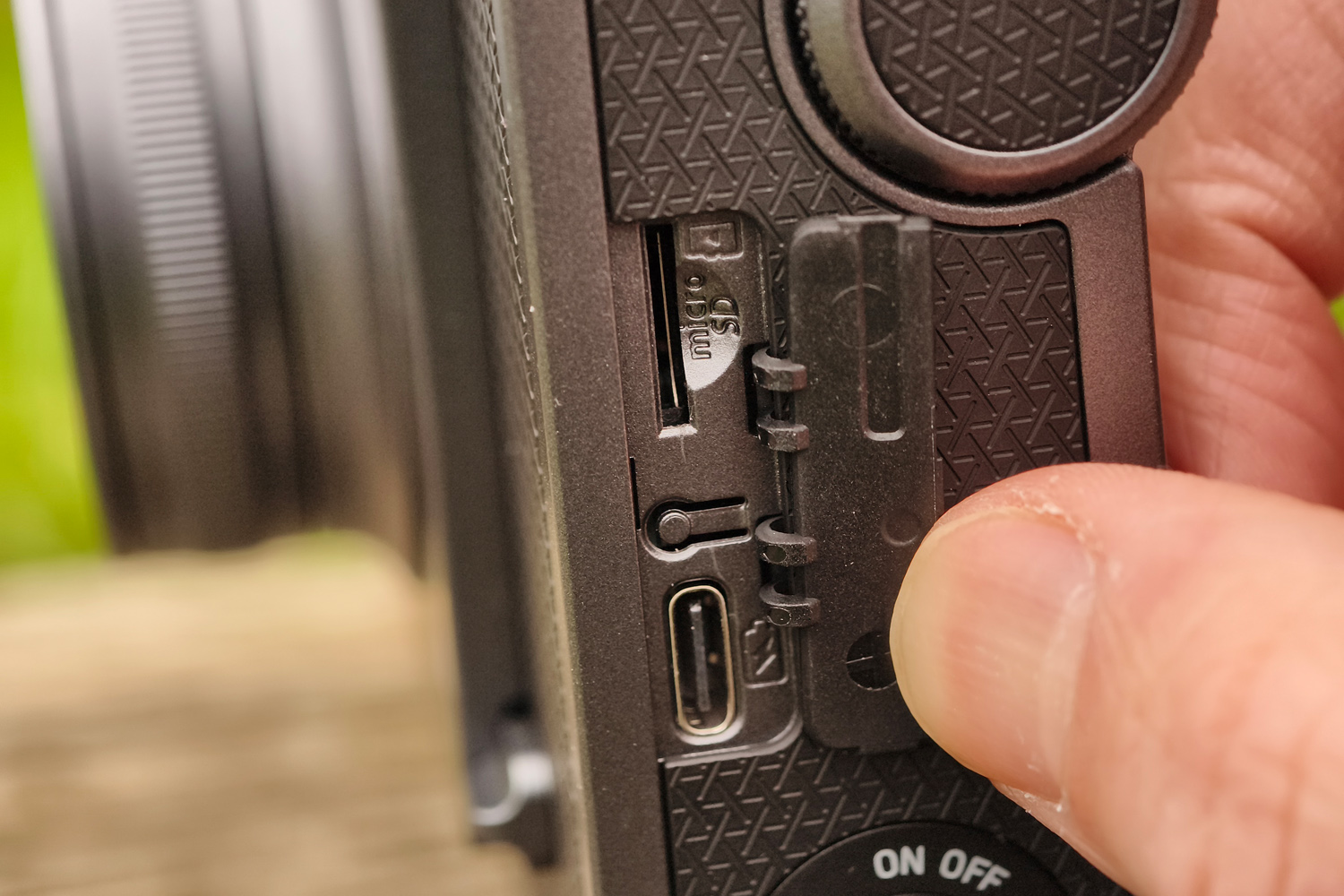
With Fujifilm’s recent mirrorless cameras being al about film simulations, it’s no shock to see the Instax team going ham with the filters and effects too. All in the Instax Wide Evo has 100 different combinations, and the control dial built into the lens barrel lets you adjust the strength of each combo. It’s a great way to add some creative flair to your photos, without having to upload them to a PC or phone first. I like that you can download certain setups through the smartphone companion app via Bluetooth, too.
This is a hybrid camera, so every shot you take starts as a digital image. There’s enough on-board storage for about 40 shots, and a microSD card slot for adding extra capacity. That’s great for saving money, as you don’t have to use up a precious print if the shot wasn’t any good – but having to physically print photos before being able to transfer them to a paired smartphone seems unnecessary.
The companion app also lets you send photos the other way, effectively turning the Instax Wide Evo into a portable printer. Just keep in mind you can’t apply any of the camera’s filters or effects to a shot you took using your phone. Still, it’s quick to send snaps across, needing just a few seconds before a print is ejected. They take a few minutes to fully develop, and no matter what Outkast tells you, they don’t need shaking while you wait.
That Fuji only quotes battery life for prints (100 of ’em) and not camera shots also suggests it knows which half of the hybrid setup will see the most use. That translates to a few hours of shooting, and with no removable battery you’ll have to either pack a USB-C battery bank or find a mains socket to refuel.
Performance: the bigger picture
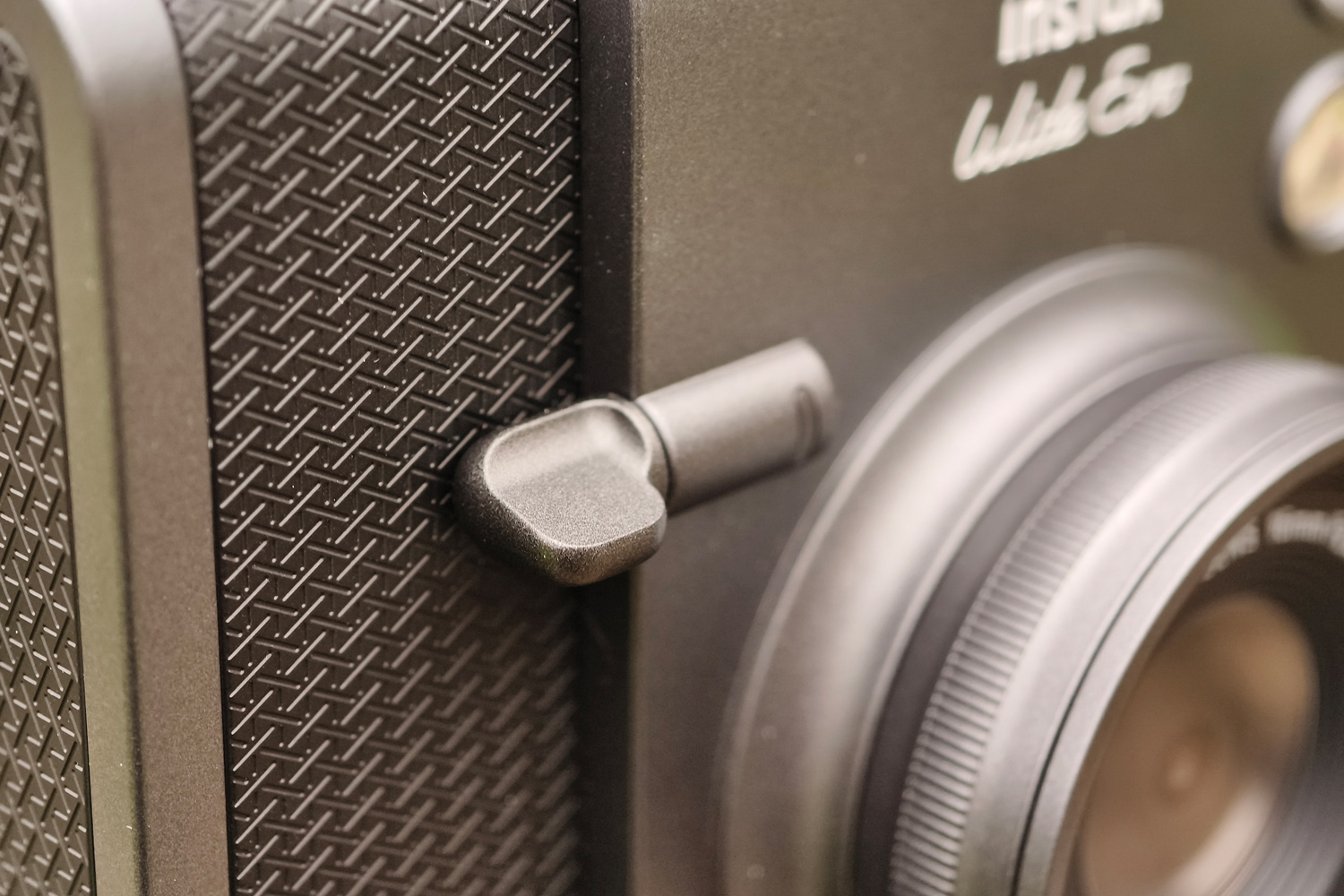
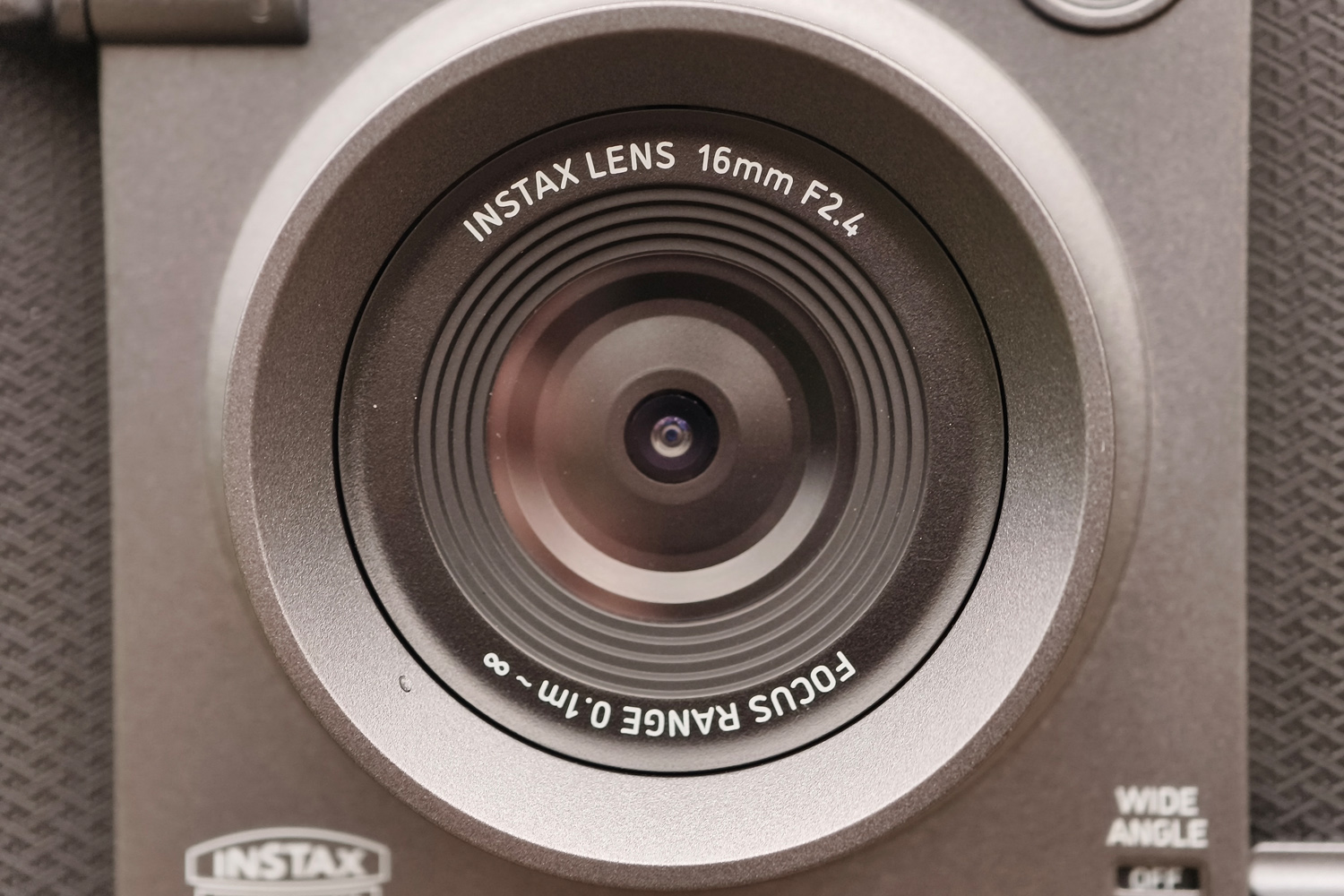
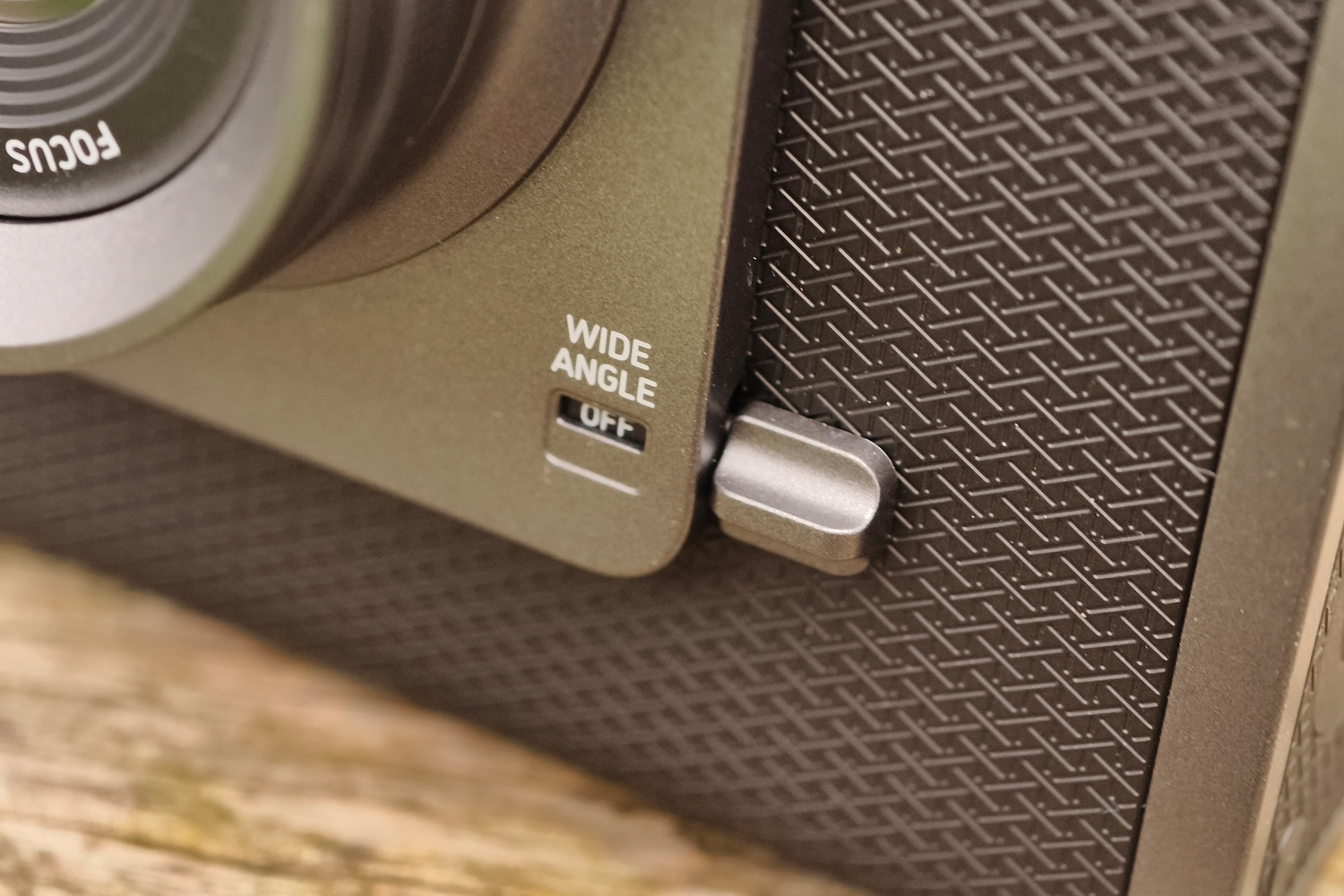
Twist the power lever and the Instax Wide Evo’s screen lumbers into life. It’s a good three or so seconds before you get a live view, and swapping between the wide angle and regular shooting modes takes a few seconds more. Scrolling through the various effects and filters can feel particularly sluggish if you’re used to snapping on a smartphone.
The LCD is low resolution and has very limited viewing angles; with no tilt it can make low- or high-angle shooting a challenge. Using the smartphone companion app’s remote shutter function helps a little, but you can’t use it to remotely apply different effects or filters.
That said, the controls are intuitive and meant I could quickly swap between filter combos, adjust effect strength and tweak things like exposure or flash using the onscreen menus. Toggling the wide angle lens physically was easier still.
Image quality: picture this
Instax Wide film makes even the most mundane of snaps look charming, being twice the size of Fuji’s Instax Mini prints and with the sort of contrast-heavy colours Instax film does so well. Expect dark shadows and bright highlights, but with a little more preserved detail and balanced exposure than a fully analogue Instax camera can manage.
Definition is rather great for instant film. It’s pretty much the same whether you’re printing a pic taken directly on the camera or one shared from your smartphone, because of how the hybrid tech works. There’s also none of the light leakage you’d find from a 70’s-era instant camera – or rather there’s not until you add some in using the effects wheel. There are loads to choose from, so your shots don’t all look the same.
I was less impressed with the Instax Wide Evo’s digital photos, which are low resolution and don’t preserve very much detail even in perfect lighting conditions. Noise jumps up rapidly as light levels drop, colours aren’t nearly as engaging, and the 4608×3456 resolution only applies once you’ve inserted a microSD card; the camera’s internal memory limits file size. Either way, the results aren’t nearly as clear or defined as a recent smartphone can manage.
Fujifilm Instax Wide Evo verdict
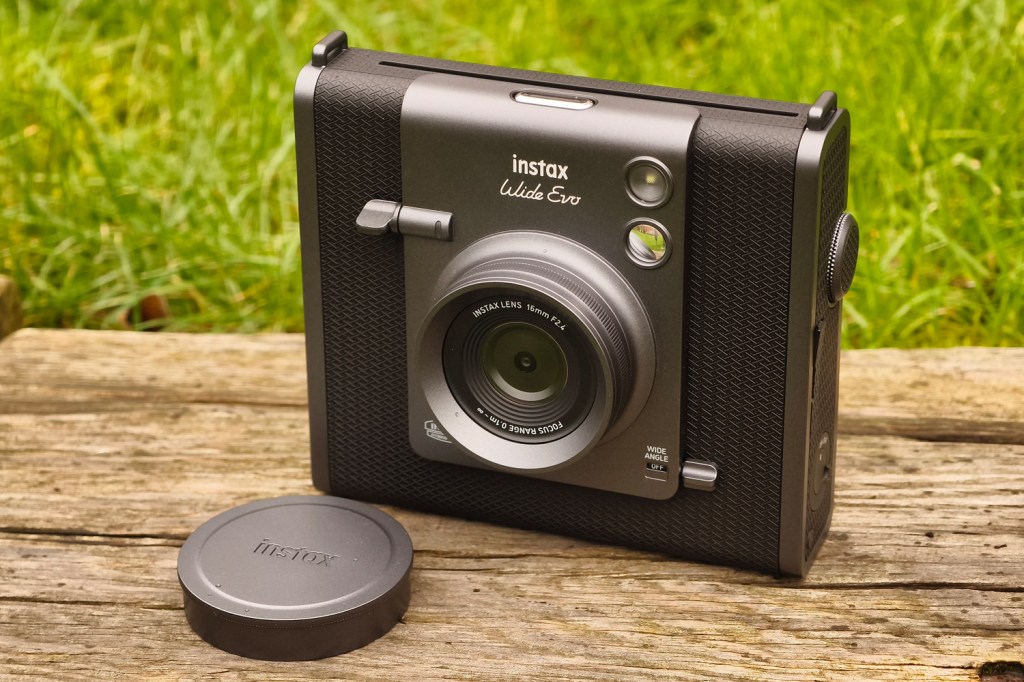
As a one-stop shop for instant photo fans wanting to snap and print pics from a single device, the Instax Wide Evo gets plenty right. The retro controls are equal parts fun and functional (once you’ve gotten used to them) and the old-school styling helps soften its sizeable dimensions. I like how the filter and effects dials let you get creative before pushing the shutter button, rather than later in editing, and there’s no doubt Instax Wide prints have the biggest impact of any of Fuji’s instant film formats.
The digital side of the story hasn’t so clear cut, with image quality that pales in comparison to any recent smartphone and fiddly file transfers. Going incognito while shooting in public isn’t really an option either, given its size. You’ve got to really want to take pictures and print them instantly to justify owning one of these.
If you’re just going to use it as a printer, the more affordable Instax Link Wide simply makes more sense – and if you don’t mind more petite prints, the Instax Mini Evo does basically everything this does for considerably less cash.
Stuff Says…
Does-it-all hybrid camera spits out big instant photos and has lots of retro charm, but the Instax Wide Evo isn’t a digital star and might be overkill if you just want to print pics from your phone.
Pros
Large, detailed Instax photos
Fun and flexible shooting modes and filters
Plenty of physical controls
Cons
Digital quality worse than your phone
Retro controls put form over function
Expensive if you aren’t using both camera and printer
Fujifilm Instax Wide Evo technical specifications
| Sensor | 1/3in CMOS |
| Lens | 16mm, f/2.4 fixed |
| Screen | 3.5in TFT |
| Viewfinder | N/A |
| Storage | 45 photos (on-board) Micro SD expansion |
| Connectivity | USB-C, Bluetooth |
| Battery | 100 prints |
| Dimensions | 139mm×125×63mm, 490g |





